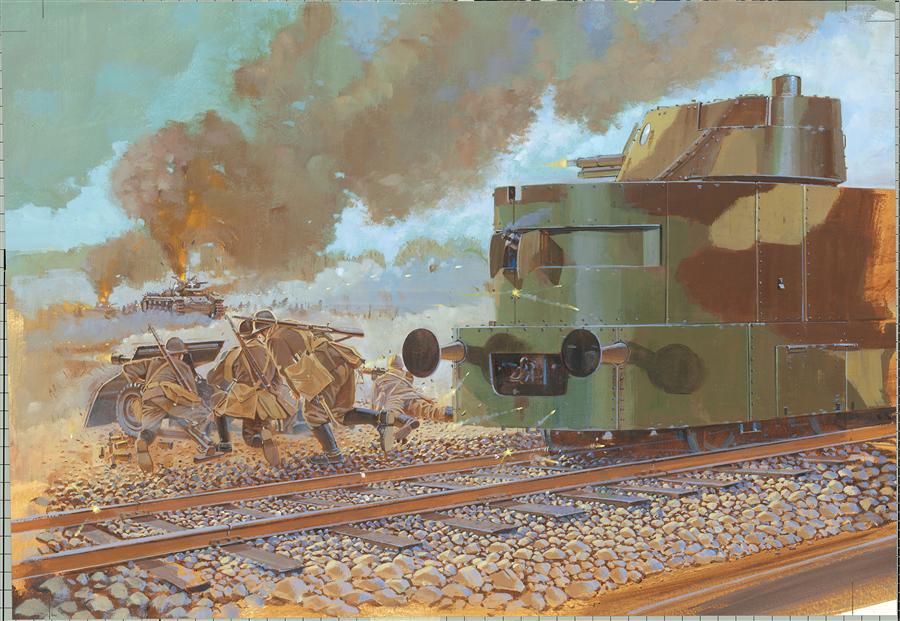
|
||||||||||||||||||||||||||||||||||||||
Après la campagne de France et dans l'optique future d'une campagne contre l'Union Soviétique, l'armée allemande, consciente des particularités du futur théatre d'opération, décida de s'équiper de nouveaux modèles de trains blindés. Aussi, le 13 décembre 1940, décision fut prise pour la construction des Panzerzüge SP41 et SP42. Le type SP42 devait comporter sept wagons blindés tractés par une locomotive diesel de 1260 CV capable de tracter 600 tonnes jusqu'à 50km/h. Le projet devait être finalisé pour septembre 1942 avec une production pour l'été 1943 mais ne fut jamais abouti. Les études préparatoires furent néanmoins utilisées pour le Panzertriebwagen 16. En effet, pour le prototype du Panzerzug SP42, une locomotive diesel WR550D14 (n°21304) fut équipée d'une superstructure blindée à 50mm construite par la société Berliner Maschinenbau AG de Wildau en 1942. Pour des raisons de poids excessif, la locomotive reçu deux bogies avant et arrière à quatre axes. C'est ce montage qui fut la base du Panzertriebwagen 16. Celui-ci se présente donc avec une locomotive diesel blindée au centre et deux bogies aux extrémités qui comportent l'armement.
Le Panzertriebwagen 16 fut activé le 27 janvier 1944. A l'origine, il était équipé sur les deux bogies de canons de 20mm Flakvierling 38 sans les boucliers mais cet armement fut considéré comme dérisoire pour un engin aussi puissant, aussi, il fut ensuite réarmé avec deux canons russes de 76,2mm F.K.295/1 comparables à ceux des Panzerzüge BP42.
Propulsé par un moteur de 550 CV et protégé par un blindage d'une épaisseur variant de 31 à 84mm, cet engin était le plus lourd et le plus puissant de sa catégorie. Construit en un exemplaire unique, il ne servit que sur le front de l'est. Pour sa protection antichar, il lui fut attribué à chaque extrémité, un panzerjägerwagen sur superstructure et tourelle de T34.
A l'été 1944, il fut associé au Panzerzug 11 (avec le Panzertriebwagen 18) et opéra en Ukraine. En juillet, suite à l'opération Bagration, le Panzerzug 11 brisa un encerclement russe dans la région de Rawa-Russka et participa à la défense de Lublin. Il retraita ensuite par la rivière San les 27 et 28 juillet 1944, participa à la défense de Radom par des tirs d'artillerie. D'août à Septembre 1944, il quitte le front pour être basé à Kielce et participer à la protection des voies ferrées dans la région de Cracovie, Skarzysko et Radom. Le 12 janvier 1945, il fut encerclé à nouveau, mais grâce à son équipage qui construisit une voie spéciale, il put s'échapper. De février à avril 1945, il fut subordonné au Panzerzug 65. En avril 1945, il participa à la bataille de Neuruppin. D'avril à mai 1945, il fut affecté au Panzerzug 350. Le 2 mai, il est capturé intact au sud de Neuruppin-Neustadt (Dosse) par la première armée polonaise. La Pologne le reçoit comme butin de guerre après la capitulation allemande, et il fut réutilisé par l'armée polonaise dans l'unité 4194E dans les combats de 1946, 1947 contre les troupes de l'UPA (armée insurectionnelle Ukrainienne). En 1950, il fut retiré du service pour réparation et reçut la numérotation dans l'organigramme PKP de « WP870027 ». En 1969, il est utilisé dans le film Rowan le rouge puis trouva sa place en 1974 au musée du chemin de fer de Varsovie où l'on peut toujours le voir.
Caractéristiques :
longueur : 22,2m / largeur : 3,2m / hauteur : 4,3m
poids : 170t (un bogie : 60t)
puissance : moteur diesel MAN 6 cylindres 550CV / réservoir : 2400 litres / vitesse : 60km/h
Protection : 31 à 84mm
équipage : 12
armement : deux canons russes de 76,2mm F.K.295/1 approvisionnés à 250 coups.
|
|
Droit d’auteur La plupart des photographies publiées sur ce site sont la propriété exclusive de © Claude Balmefrezol Elles peuvent être reproduites pour une utilisation personnelle, mais l’autorisation préalable de leur auteur est nécessaire pour être exploitées dans un autre cadre (site web publications etc) Les sources des autres documents et illustrations sont mentionnées quand elles sont connues. Si une de ces pièces est protégée et que sa présence dans ces pages pose problème, elle sera retirée sur simple demande. Principaux Collaborateurs:
Nb
de visiteurs:8760478 Nb
de visiteurs aujourd'hui:643 Nb
de connectés:36
| ||||||||||||||||||||||||||||||||||||





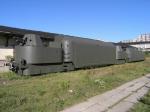
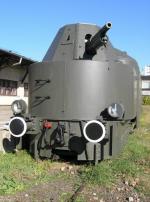
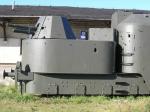
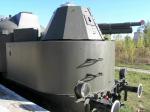
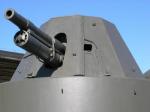
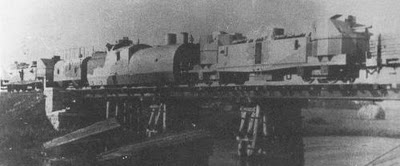
.jpg)
